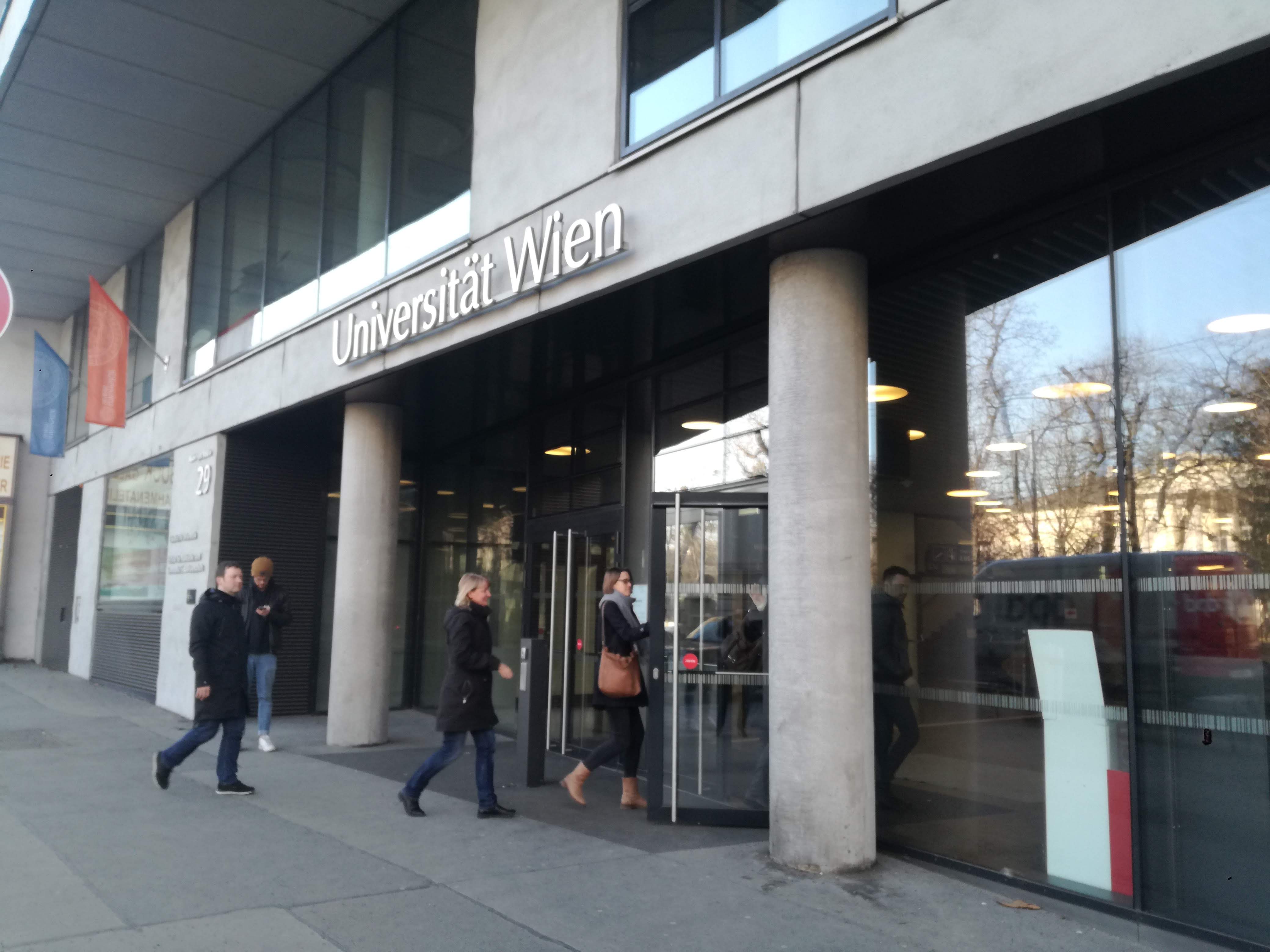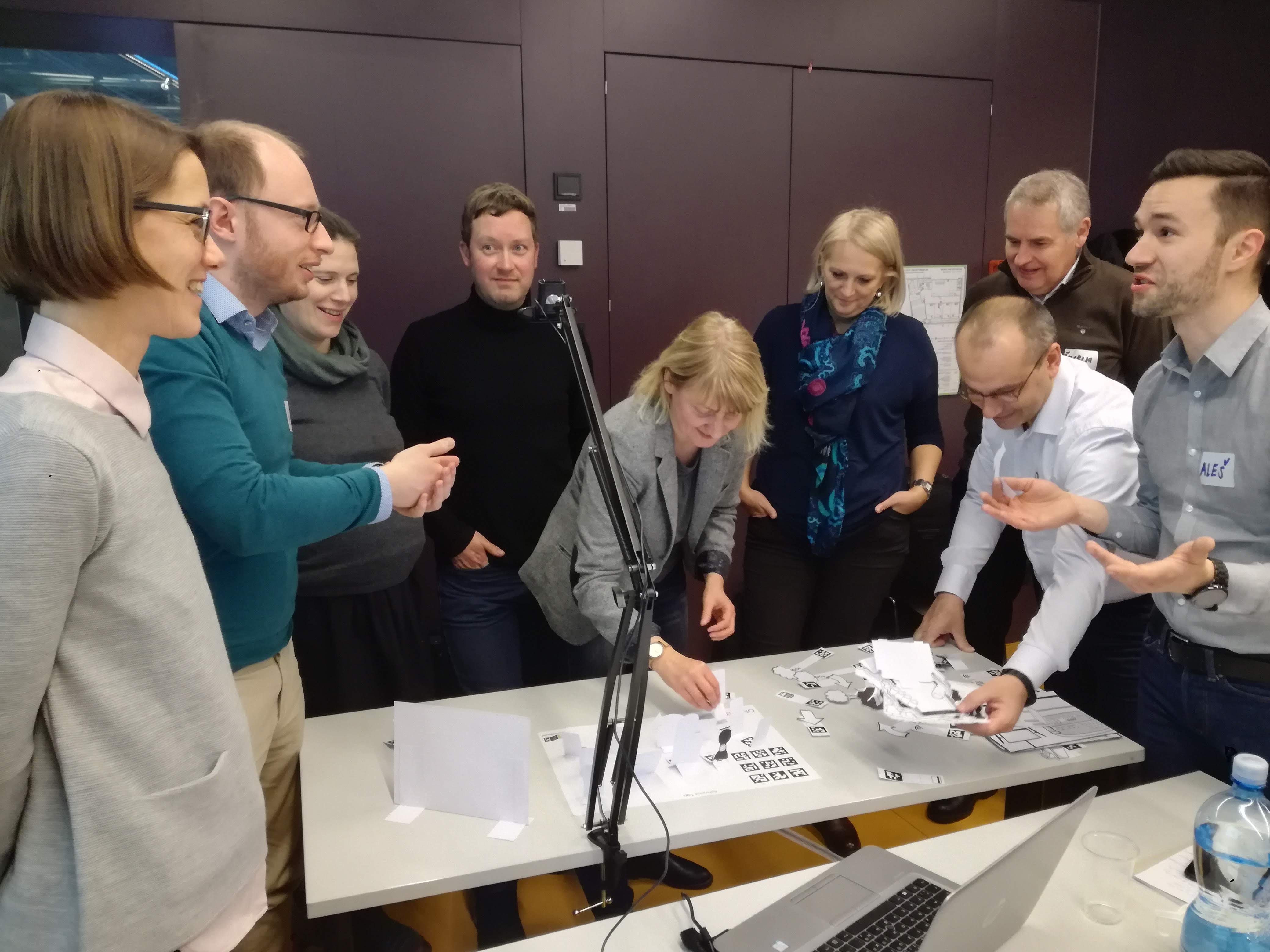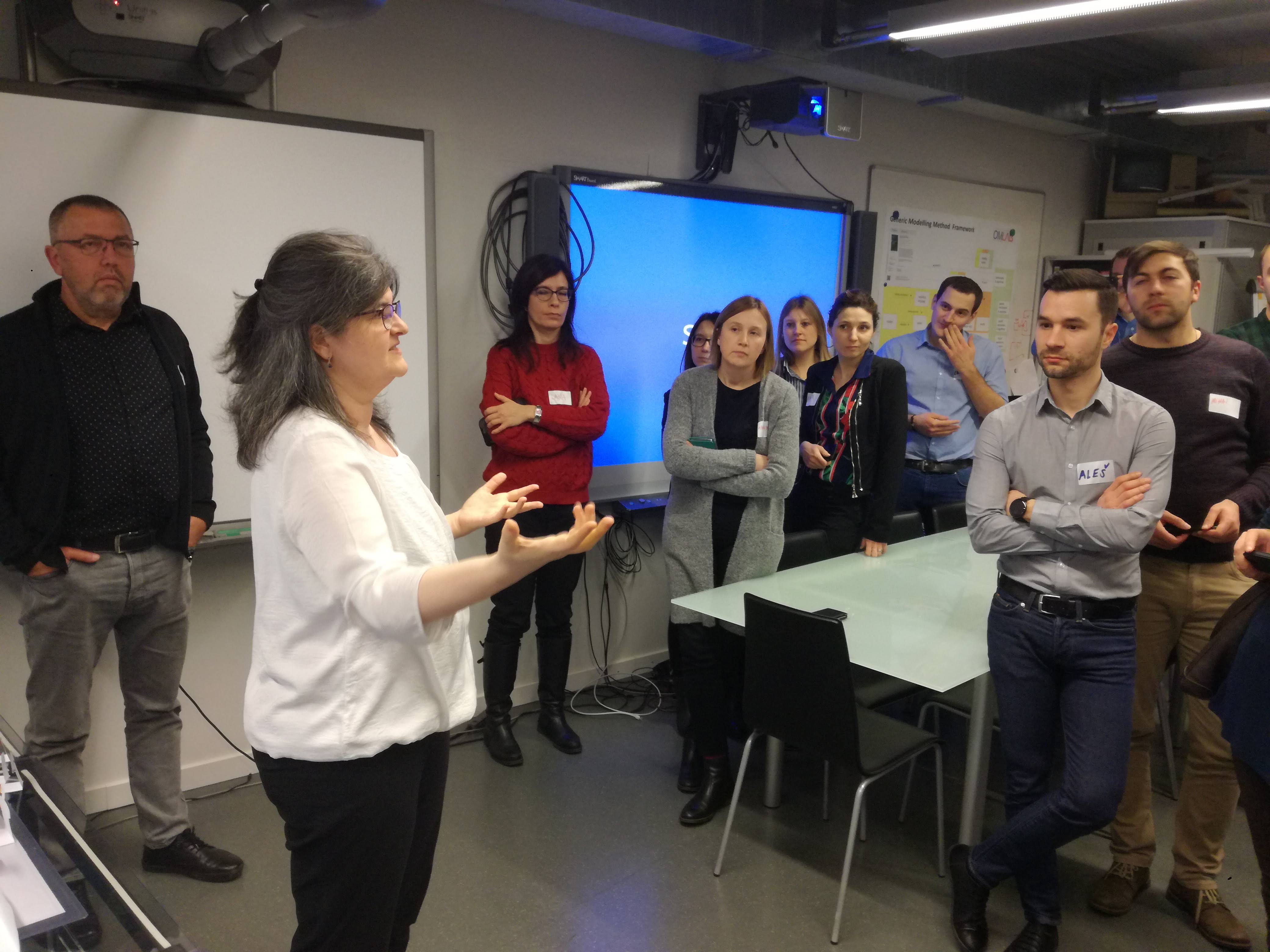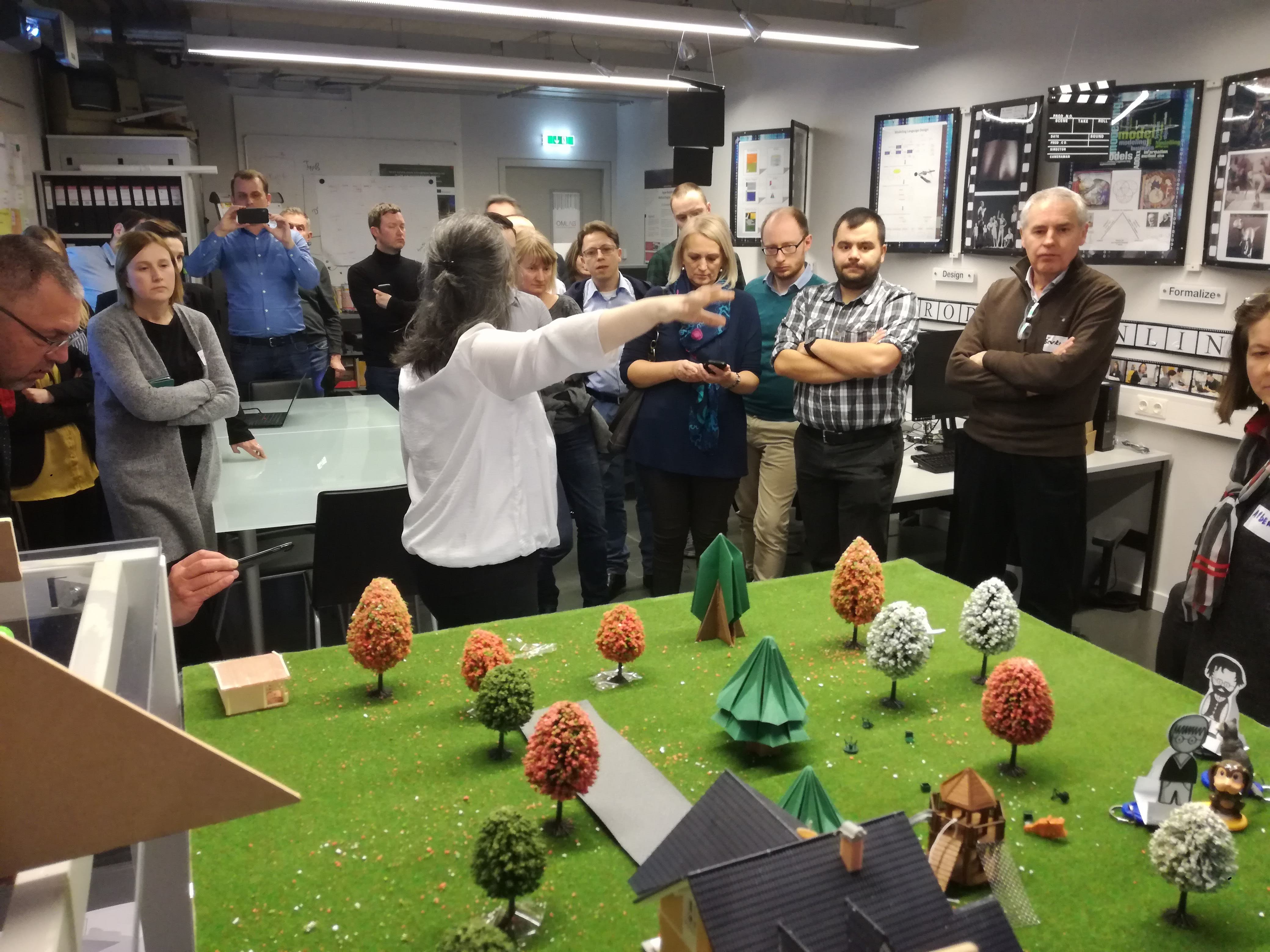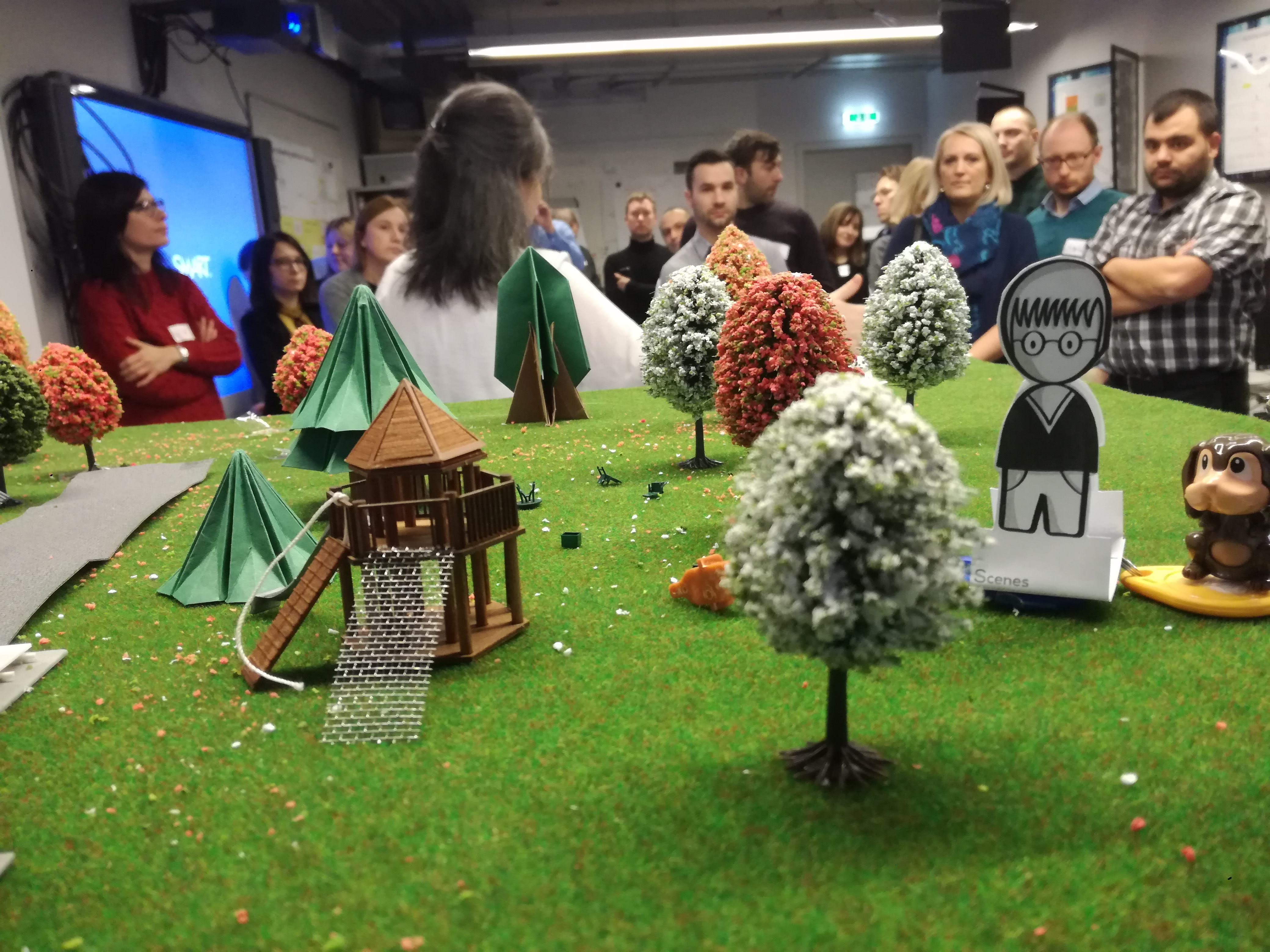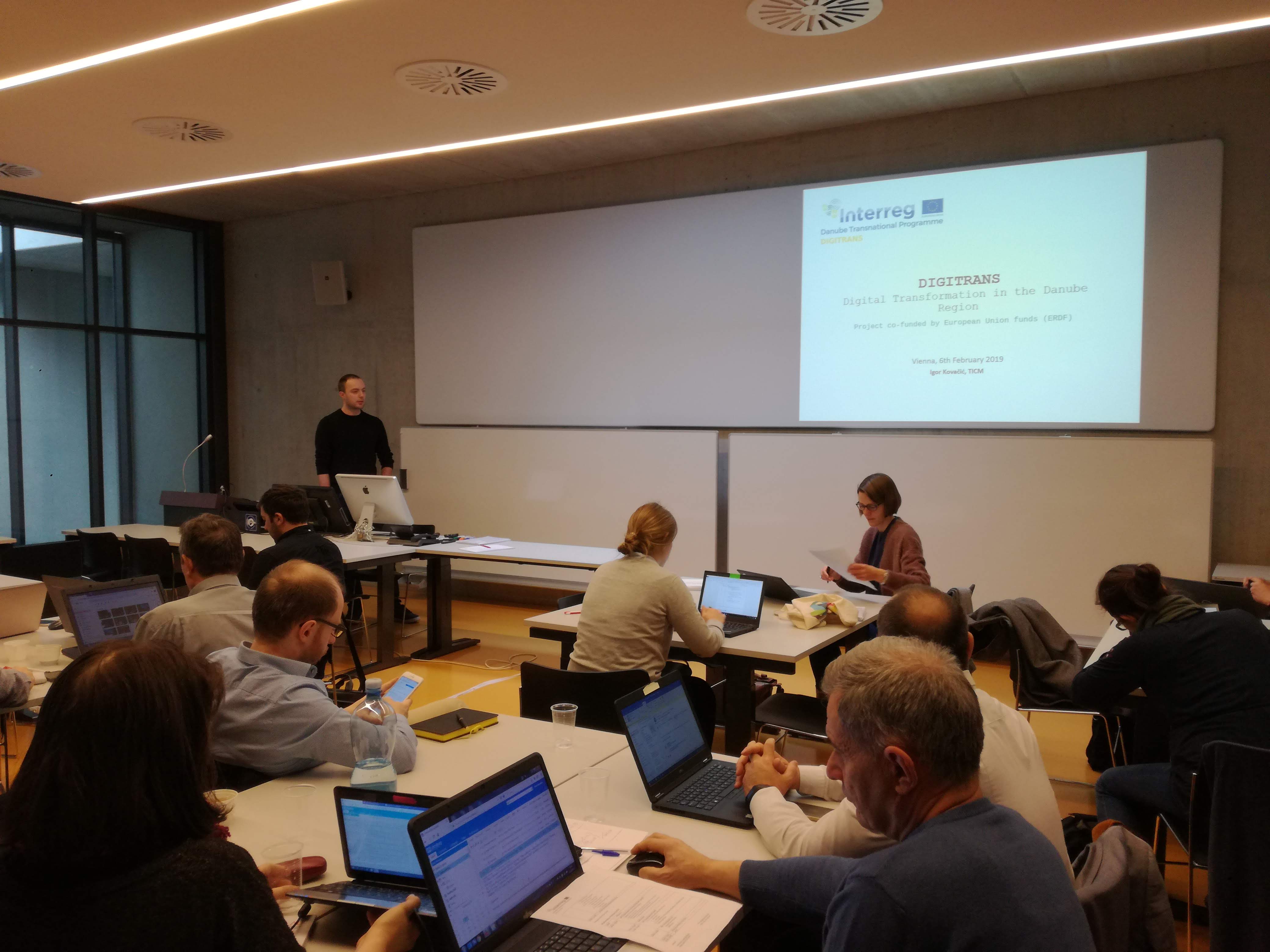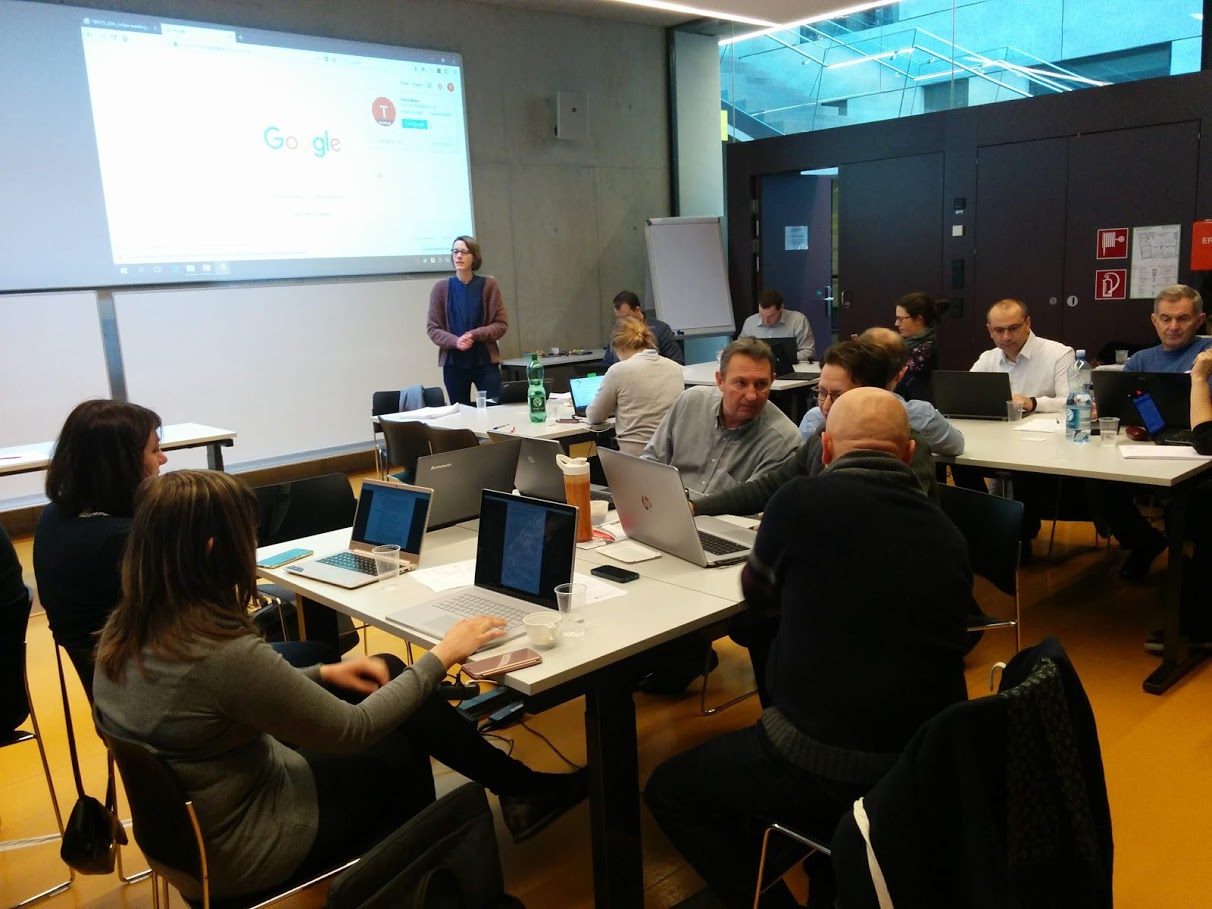DIGITRANS - FIFTH DIGITRANS PARTNER MEETING IN VIENNA – FINAL ARRANGAMENTS
14-02-2019
Even though there is only a few months left until the end of the project and a lot of work has already been done, a project to do list is still very long.
Digital transformation of the Danube region (project acronym DIGITRANS) partners gathered at the University of Vienna, Faculty of Computer Science, to participate in the 5th partner meeting held on 5th and 6th February 2019. The project consortium comprises 15 partners from 7 different Danube regions.
Our host, Faculty of Computer Science of University of Vienna is one of the project partners.
First day of the meeting tackled blended learning trainings, which are conducted in three different phases - face-to-face trainings, online consultations and individual consultations. Their purpose is to build capacities of small and medium sized enterprises to deal with digital transformation process more easily. Partners were presented with trainings status quo, shared experience from completed trainings and discussed tasks to be done until the end of the project.
DIGITRANS e-learning platform was the main topic in the second part of the meeting. Partner in charge of platform development, Faculty of Computer Science of University of Vienna, presented the results and tasks to be completed before project is officially over.
At the end of the first day, partners visited OMiLAB laboratory at the faculty (short from The Open Models Laboratory). OMiLAB is a platform for research, learning and cooperation for the development of modelling methods. OMiLAB is both a physical and virtual place equipped with tools, concepts and meta-modelling platform for producing IT based modelling tools. By using Scene2Model approach, its users can transfer the solution created in physical space to digital space.
Project partners were introduced to Scene2model approach by participating in the workshop organized by the host. Partners were divided into groups and every group had to solve the assigned case study and visualize it by modelling the problem and the solution using SAP scenes. Physical models were then transformed to digital ones using special technology. At last, each of the groups presented their models to others.
The second day started with the presentation of the communication activities status quo. Partners were given the overview of what still needs to be done in relation to project promotion and visibility.
The meeting in Vienna was concluded with the topic of project sustainability. Last, but certainly not least, this topic got all of the partners involved in the discussion on how to achieve sustainability of project results. Discussion was productive and partners agreed on next steps.
The fifth meeting vas very productive making it easier for the consortium to achieve all of the planned activities and results by June 2019.
